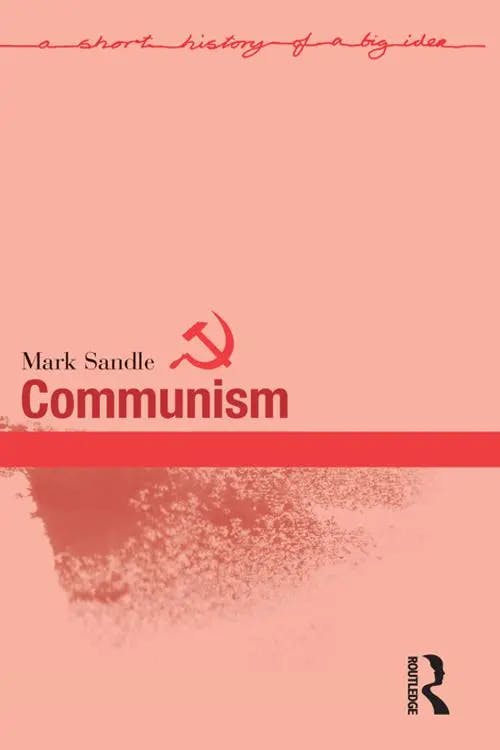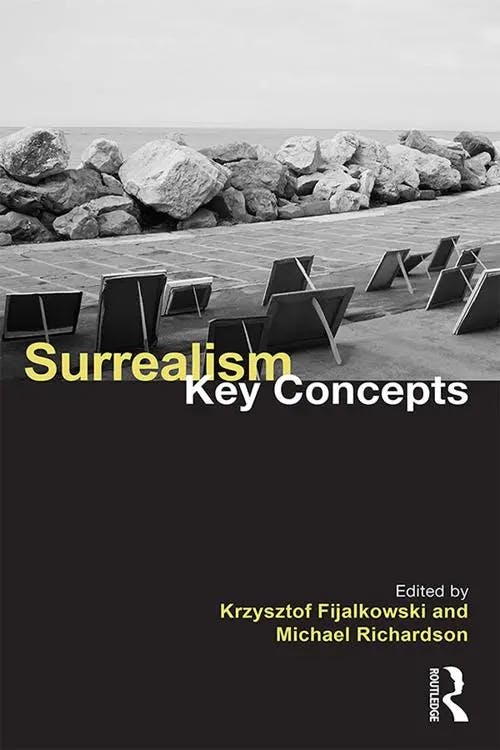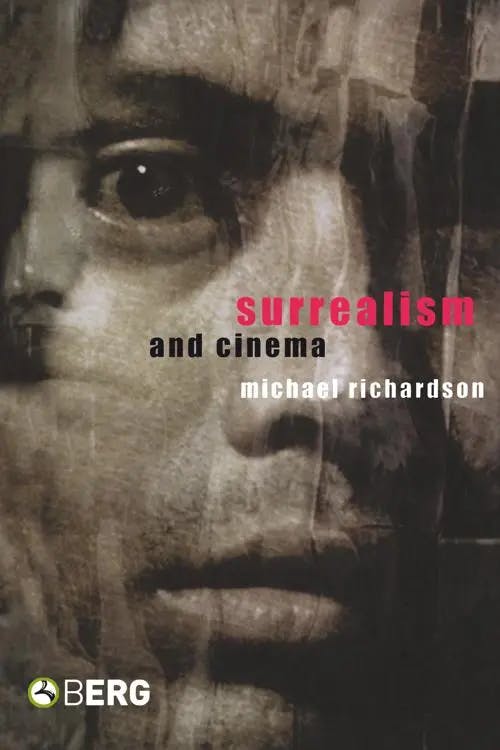Surrealism in Literature & Film: An Introduction
PhD, Media Arts (Royal Holloway, University of London)
Date Published: 08.03.2023,
Last Updated: 24.01.2024
Share this article
Defining Surrealism
The term ‘Surrealism’, in its layman’s use, is often associated with that which is not quite real. If an experience, for example, is described as ‘surreal’ something about the situation might feel dream-like or hallucinatory. While the sensation of an unnatural or strange encounter could certainly receive the designation of ‘surreal’, the term `Surrealism’ has a much more precise meaning. In a historical sense, Surrealism refers to a 1920s cultural avant-garde movement. Furthermore, the term ‘Surrealism’ does not simply mean the antithesis of real; it is not ‘anti-real.’ The prefix ‘sur’ means over, above or beyond, hence surrealism means ‘beyond the real’. How this manifests as an aesthetic motif can be observed in perhaps one of the most famous pieces of surrealist work: Salvador Dalí’s The Persistence of Memory (1931). Please find a video by Great Art Explained below with more details on the piece.
In her book, Salvador Dalí, Mary Anne Caws calls Dalí ‘Surrealism incarnate’ (2009). That being said, Dalí is also renowned for his realist artistic techniques. The Persistence of Memory exhibits a detailed and naturalistic vision. The landscape, the shadows, the texture, and use of color are all suggestive of a highly technical, academic style of painting; it gestures to a pre-modern mode of art that holds accurate representation of the world as priority. The main distortion in the painting can be observed in the famous melting clocks. A clock represents an objective measure of time; it is a mechanical and fixed timepiece. In obscuring it – making the clock behave in an unfamiliar way – Dalí provokes us to question its material makeup and, as a result, its use.
Dalí presents a clock in a way we may have never encountered, our experience of the passing of time is often distorted and warped, creating a simultaneous sense of familiarity and strangeness. Dalí’s melting clocks beg the question as to the authority of objective, universal truths. Surrealism hoped to subvert such ideas of logic and rationality, instead unleashing the unconscious from structured thought. Hence, Surrealism goes ‘beyond’ the mere appearance and behavior of what it represents, instead evoking a state of disorientation through the dissolution of the familiar stability of logic.
A central motif of Surrealism is the rendering of familiar objects into strange new forms, complicating our perceptions and knowledge of the outside world. Often violently discordant, Surrealism hoped to dislodge our sense of structure and order, creating the impression of a dream-like uncanny. This effect can be found in a variety of art, literature and cinema.
Where did Surrealism emerge from?
Surrealism has been understood as a cultural response to the devastation of World War I. The Surrealists were part of a larger cultural movement famous for ‘denouncing the war and the government’s fascist policies’ (Rosemont, 2019). It became clear that horrors of the Great War called for radical and equally disturbing art. Hence, the Surrealist group was officially formed in Paris in 1924 with the publication of André Breton’s first Surrealist Manifesto. The term ‘Surrealism’, however, emerged several years prior and the nature of the Surrealist project has led to assertions that Surrealism ‘has always existed’ as ‘the language of the unconscious’ (Rosemont, 2019).
Surrealism is often understood as the successor of Dada, a nihilistic ‘anti-art’ movement that mocked the institution of art and sought to reveal the meaningless chaos of war and modern life more generally.
As David Hopkins notes in A Companion to Dada and Surrealism, 'Surrealism undoubtedly saw itself as building on Dada’s attack on the rhetoric of reason', identifying that the two movements shared
the primacy of poetry, the centrality of chance, the questioning of received attitudes towards morality (especially in terms of sexuality), the importance of humor, as well as a number of aesthetic and thematic preoccupations. (2016)
David Hopkins
the primacy of poetry, the centrality of chance, the questioning of received attitudes towards morality (especially in terms of sexuality), the importance of humor, as well as a number of aesthetic and thematic preoccupations. (2016)
Alongside the chaos and destruction of war, modernity was simultaneously characterized by a post-enlightenment commitment to the rational and the empiricist. Surrealism was a response to this ‘reign of logic’ that saw the expansive richness of experience ‘circumscribed’ (Breton, 1924). It attended to the irrational dimensions of metaphysics, subversive to prevailing laws of logic. Sigmund Freud’s psychoanalysis was the theoretic bedrock of this Surrealist undertaking. Freud famously identified dreams as a psychological apparatus by which to investigate the elusive faculties of the mind: the unconscious. The introduction to the Complete Works of Sigmund Freud outlines Freud as ‘an Austrian neurologist who developed psychoanalysis, a method through which an analyst unpacks unconscious conflicts based on the free associations of dreams and fantasies of the patient’.
Rather than a means to medical treatment, Surrealism hoped to give artistic form to these ‘dreams and fantasies’. In doing so, they might free the unconscious mind from the prison of rational thought, revealing the irrational, erratic and creative capacity of the mind through such autonomy.
Communism was another movement with which Surrealism was affiliated. Communism, as defined by Mark Sandle in his book of the same title, is ‘a political movement and a socio-economic system on the one hand, and a set of ideas and theories on the other’ (2014). Arguably, It was the latter that Surrealism most consistently engaged with. Sandle writes that
Communism always acts as a critique of existing social, political, economic and cultural arrangements, and also offers an alternative to that reality, a vision of a radically different future. (2014)
Mark Sandle
Communism always acts as a critique of existing social, political, economic and cultural arrangements, and also offers an alternative to that reality, a vision of a radically different future. (2014)
This outlines the significance of communist ideas to the Surrealists. As a confrontation of structural authority, Surrealism was strongly opposed to the rise of fascism in Europe. Communism proposed a material, political, and cultural emancipation that paralleled their ambition to release the repressed components of the psyche. Where psychoanalysis offered the principles of the unconscious and the methods by which the unconscious is revealed, Karl Marx proposed the subversion of political and economic oppression.
What is Surrealism in literature?
Surrealism quickly became an international and multidisciplinary project. It was originally conceived, however, in Paris as a literary movement. It was Breton’s decree that writing exercises could provide a systematic uncovering of the unconscious, traversing the divide between the latent content of the mind and external reality. But if the unconscious is characterized by its elusiveness, how might it become accessible to the waking, rational mind?
One of the ways the Surrealists hoped to achieve this was through an exercise called ‘psychic automatism’. Psychic automatism was a method by which the artist would engage in a stream of consciousness by writing as quickly and as possible, without interruption. This exercise was theorized to subvert the process by which rationality and logic order thought, resulting in art that forced the unconscious to the surface. Breton wrote:
automatism in its pure state, by which one proposes to express – verbally, by means of written word or in any other manner – the actual functioning of thought. Dictated by thought, in the absence of any control exercised by reason, exempt from any aesthetic or moral concern. (Breton in Surrealism, Key Concepts, 2016)
Krzysztof Fijalkowski, Michael Richardson
automatism in its pure state, by which one proposes to express – verbally, by means of written word or in any other manner – the actual functioning of thought. Dictated by thought, in the absence of any control exercised by reason, exempt from any aesthetic or moral concern. (Breton in Surrealism, Key Concepts, 2016)
In this process, the unconscious flowed through the hand of the artist, circumventing the intervention of conscious reason. The result was often a series of bizarre and irrational free associations that created juxtaposing ideas and illogical imagery. Much Surrealist poetry was created this way. Paul Eluard was a Surrealist who exemplified the automatism process, and its disconcerting effect. His poem titled ‘The Masters’, accessible in Willard Bohn’s One Hundred Years of Surrealist Poetry, begins:
At the fortress of shaken laughs
In a tub made of lead
How comforting to have
The wings of a dog
This exemplifies the results of the free association that psychic automatism facilitated, and the humorous, disquieting and arresting artistic effect that Surrealism has come to be known for.
Although the emergence of the Surrealist movement is dated back to the 1920s, surrealist qualities have been identified in much preceding literature. In Britain, Herbert Read argued that Surrealist writing had a historical home, citing ‘William Blake and Lewis Carroll’ as precursors to literary Surrealism (1936). The same is true of literature written after the gradual dissipation of the Surrealist group. Often a prominent feature of science fiction or fantasy, Surrealism in literature endures across international contemporary work.
In Watermelon Sugar (1964) by Richard Brautigan could be used as an example of a more recent Surrealist novel. The first person narrative seems unedited in style, evoking the automatism process, and the world of the novel operates by a sort of dream-logic. Haruki Murakami is a popular Japanese author also associated with Surrealism. His work – from the heavily fictional novels such as Hard-Boiled Wonderland and the End of the World (1985) to his more realist novel, Norwegian Wood (1987) presents a dream-like world of strange nostalgia and illogical systems of thought. Perhaps because of Murakami’s peculiar worldbuilding, his novels transcend their geographical location, usually Tokyo, and appeal to a universal sense of mental unrest. This exemplifies the power of Surrealism; it speaks to a collective experience of the unconscious and the various ways this might manifest.
What is Surrealism in film?
The histories of Surrealism and film are tightly woven. Cinema was an important medium for the Surrealists as it allowed them new ways to manipulate realist images. When film first emerged, there was skepticism about its artistic potential. How could a medium that (ostensibly) shows the world as it is, be useful to modern art that sought to subvert naturalist representation? The Surrealists accepted this challenge, creating a series of short films throughout the 1920s that have become invaluable to modernist studies of the avant-garde. One of the most famous examples is Un Chien Andalou (1929) directed by Spanish-Mexican Surrealist Luis Buñuel and written by Salvador Dalí. Michael Richardson, in Surrealism and Cinema (2006), posits that Un Chien Andalou ‘is probably the most over-analysed film in cinema history’, calling it ‘a passport into Surrealism’ that is best understood with fresh eyes, outside of its various critical interpretations (2006). The short film is available to view here:
Like Dalí’s Persistence of Memory, Un Chien Andalou contains many realist cinematic elements. For instance, the use of shot/reverse shot and fades signify the passing of time and a new location; speaking to us in an established filmic language we understand. The images themselves, however, are absurd at times, disturbing and shocking at others, subverting our invested understanding of the reality the film presents. The medium of cinema offered the Surrealists an effective means to the ‘uncanny’, a psychoanalytic concept that describes the sensation of an encounter that is both familiar and strange; both ordinary and disturbing. In Dalí,Surrealism and Cinema, Elliott H. King describes the significance of film to Surrealism:
For the Surrealists, cinema was an intermediary state between life and dream – not a means to escape reality but to intensify it. (2010)
Surrealism also has a presence in contemporary Hollywood. David Lynch is an example of a director who exhibits Surrealist filmic tendencies. ‘It is apparent’, writes Richardson in Surrealism and Cinema,
that Lynch has learned a lot from viewings ofUn Chien andalouand surrealist paintings, which have provided him with his essential building blocks, based upon the use of bizarre juxtapositions and details. (2006)
Michael Richardson
that Lynch has learned a lot from viewings ofUn Chien andalouand surrealist paintings, which have provided him with his essential building blocks, based upon the use of bizarre juxtapositions and details. (2006)
Lynch’s films are profoundly uncanny. Mulholland Drive (2001), for example – a film that has been categorized as a Surrealist neo-noir – follows two central characters: one woman, Rita (Laura Elena Harring) who breaks into an apartment with amnesia after surviving a car accident, and the woman whose apartment she breaks in to. Together, they try to piece together information about Rita’s life out of the strange fragments available to them. Dispersed within this narrative are scenes of a strange and seemingly unrelated nature, contributing to an uncanny tension throughout. This scene from Mulholland Drive exemplifies such tension:
Allister MacTaggart’s assertions put forth in The Film Paintings of David Lynch (2010), highlights this uncanny tension, claiming ‘in Mulholland Drive the relationship between what we see on the screen and our perceived knowingness of suspicion of disbelief as an audience is constantly undermined’ (2010). Not only are the characters experiencing this tension between the strange and the familiar, but the audience are too.
Surrealism today
Based on the given contemporary Surrealist examples, it is clear that the term Surrealism has since become detached from the doctrine of the modernist avant-garde art movement. Rather than referring to a type of art made by a historical coterie, or a cultural genre or category, Surrealism more often now describes a set of observable stylistic motifs. Wherever there are traces of psychoanalysis, dreams, hallucinations, absurdism, disjointed imagery or the aesthetic of the irrational, there is a suggestion of Surrealism. Whether or not these designations are accurate is not completely relevant to the Surrealist project. Indeed, part of Surrealism’s original intent was to complicate such cultural categories and structures.
Today, the principles of Surrealism are alive in visual art, literature, film, music and theatre. Marian Williams constructs surrealist collages and television shows like Severance (2022) take the familiarity of an office setting and apply an eerie, other-worldly logic to the action that takes place there. Since a formal Surrealist organization does not exist in the way it did in the 1920s, the parameters of the term can be difficult to define in contemporary times. Academic definitions of Surrealism are being constantly reappraised and re-located, expanding beyond the movement formed in 1920s Paris. As Kristoffer Noheden and Abigail Susik assert in Surrealism and Film After 1945 (2021), there is ‘a living, transnational surrealism that has continued to grow and morph throughout the post-World War II period and into the present moment’ (2021).
Further Surrealism reading & resources on Perlego:
- David Lynch by Michael Chion
- Surrealism, Feminism, Psychoanalysis by Natalia Lusty
- Photography and Surrealism by David Bate
- Surrealism and the Gothic by Neil Matheson
What is Surrealism in Literature?
What is Surrealism in Film?
What is Surrealism in simple terms?
Bibliography
David H. (2016) A Companion to Dada and Surrealism. 1st ed. Wiley, 2016.
Breton, A., Polizzotti, M. (1997) Anthology of Black Humour, translated by MarkPolizzotti. San Francisco: City Lights.
Hopkins, D. (2016) A Companion to Dada and Surrealism. 1st ed. Wiley.
Richardson, M. (2006) Surrealism and Cinema. 1st ed. Bloomsbury Publishing.
Mactaggart, A. (2014) The Film Paintings of David Lynch. 1st ed. Intellect Books Ltd.
Noheden, K., Susik, A. (2021) Surrealism and Film after 1945. [edition unavailable]. Manchester University Press.
Rosemont, P. (2019) Surrealism. City Lights Publishers.
Freud, S. (2019) Complete Works of Sigmund Freud. 1st ed. Heritage Books, 2019.
Fijalkowski, K., Richardson, M. (2016) Surrealism: Key Concepts. 1st ed. Taylor and Francis.
Bohn, W. (2022) One Hundred Years of Surrealist Poetry. 1st ed. Bloomsbury Publishing.
King, Elliott. (2010) Dalí, Surrealism and Cinema, Oldcastle Books.
Caws, Mary Ann (2009), Salvador Dalí. Reaktion Books.
Read, Herbert, (1936), ‘Introduction’, Contemporary Poetry and Prose 2.
PhD, Media Arts (Royal Holloway, University of London)
Aoiffe Walsh has a PhD in Media Arts from Royal Holloway, University of London. With a background in film studies and philosophy, her current research explores British literary modernism, with a particular focus on surrealism between the wars. She has lectured and published pieces on documentary and film theory, film history, genre studies and the avant-garde.




